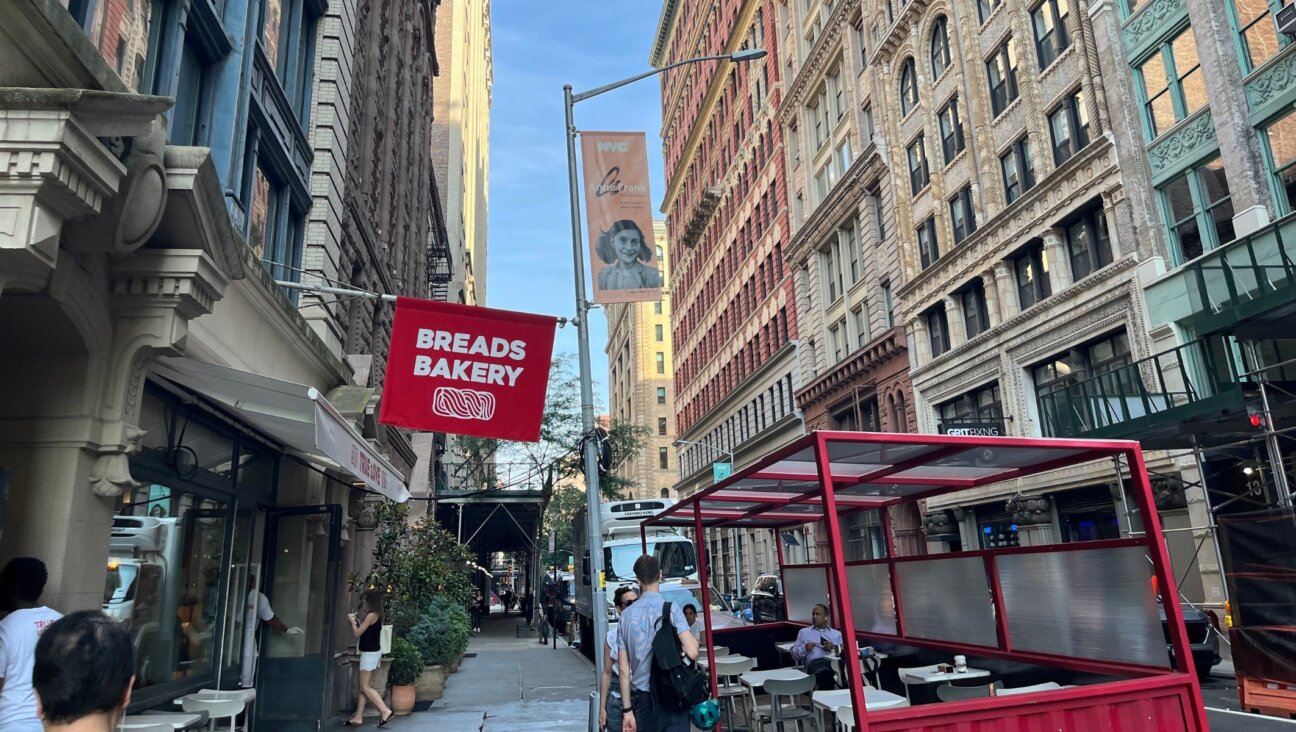I was taught the ‘opposing perspective’ of the Holocaust in middle school. I’ll never forget it

Image by Getty Images
In the fallout from NBC News’ revelations that teachers in Texas were told to teach “opposing perspectives” about the Holocaust, many people are asking what teaching “opposing perspectives” of the Holocaust looks like. I know from personal experience, since I attended a Holocaust class that invited us to consider the Nazi perspective in middle school. The school was our local public school in Oxford, and the class in question occurred when I was in Year 6 (the equivalent of 5th grade) in the U.K.
The experience was enraging and humiliating.
The teacher started with raw video footage of the concentration camps. We sat on the floor cross-legged and watched a bulldozer shovel piles of naked, emaciated Jewish corpses into a pit, the way they dispose of trash at landfills.
The hopelessly age-inappropriate film without context was bad enough. But our teacher decided, for reasons I will never understand, to explore industrial genocide through the medium of interpretative dance.
We could play the role of either a Jew getting murdered or a Nazi guard doing the murdering. Our choice.
After explaining to us how Jews were rounded up on trains and herded into gas chambers, our teacher invited us to consider the perspective of the Nazi guards overseeing the operation.
After all, there was a war going on at the time, she explained. They had probably signed up to defend their country, just like British troops. Nazism was a totalitarian one-party state. Nazi soldiers had families and lives too. It would have been really dangerous to stick their necks out and defend the Jews. Sure, they sealed the doors and pressed the gas button, but might they not have done so as just a cog in a system much bigger than themselves?
Were they not just following orders?
She asked us to consider these emotions and express them when performing our individual dances.
Each child performed their dance individually. Around half the class chose to be Jews, and the other half chose to be Nazis.
I chose to be a Jew (obviously). When it was my turn, I mime-danced being shoved into a gas chamber, terrified. I pounded my fists against the doors slamming shut, trying to get out, and then dramatized choking to death on Zyklon B. Acting out the horrible fate of two-thirds of European Jewry impressed on me the reality of the Holocaust. I felt profoundly sad that so many Jews had died in this awful way, murdered simply for the crime of existing. I felt deeply uncomfortable, and yet totally unable to object to performing.
After being forced by my teacher to portray my own execution at the hands of the Third Reich in front of all my peers, I then had to sit respectfully, and watch them take their turn to be Nazis. Through dance.
One of my friends chose to be a guard. His performance featured him clubbing the Jews with his rifle, pushing them into the ovens, and pulling the switch. He mime-danced an attack of conscience, in which he returned to the gas chamber to see if any Jews were still alive, if he could help any of them. Of course, he could not. He had killed them all.
This is what educating about “opposing perspectives” of the Holocaust looks like in the classroom.
My peers learned that the Holocaust was very sad for the Jews of course, but for Europeans it was just something that got way out of control, like a house party when your parents are out of town, and your drunk friend smashes an expensive vase. Regrettable, yes, but basically an accident we can all learn and grow from.
Worst of all, my classmates learned that they too could have been Nazis if they’d been in the Third Reich, and, crucially, to have done so would have been perfectly logical. If all your friends are rounding up and murdering Jews, wouldn’t you go along to get along?
I was the only Jew in the class. No one asked me how I felt, or checked to see if I was OK afterwards. I was angry, upset and powerless.
My mother was livid. She wrote an extremely strongly worded letter to the principal and marched up to the school gates demanding repercussions for this gross act of professional misconduct.
No action was taken. My mother’s furious complaints were brushed off.
I learned a lot that day. I learned my teacher did not care at all about my experience as a Jew. I learned that my peers were comfortable considering that yes, they could have been Nazis, if they had been there. Above all I learned not to trust my place in society as a Jew, and that if anyone ever did come to try and murder me for my ethnicity, I shouldn’t bother looking for help.
As an adult I now know there are many wonderful non-Jews whose constant vigilance against bigotry keeps civilization on the right track. But in middle school, watching my classmates and friends act out the extermination of my people, I felt anyone could be a Nazi with a little light nudge.
These are not lessons I would want any Jewish child (or any child) to learn about their society. Our #EndJewHatred movement fights to make sure Jewish civil rights are respected and stuff like this never happens again.
Holocaust education is a painful but essential tool for future generations to learn from, as fascism has not disappeared with the Nazi party. I hope that the educators in Texas make sure that the Holocaust is taught appropriately, as the horrendous crime that it was, and do not highlight “opposing perspectives.”
I took that class already, and it was horrible.
To contact the author, email [email protected].
















